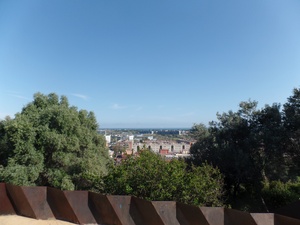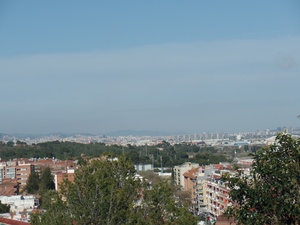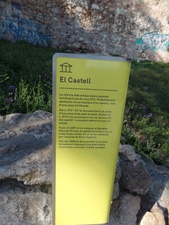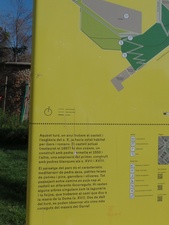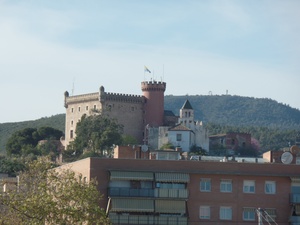Castelldefels is a small, Catalan city located 25km southwest of Barcelona, Spain. It pertains to the Barcelona province within the Spanish region, Catalonia. The name Castelldefels, according to Castelldefels Cultural Tourism, “comes from Castrum Felix, which, when Romanised, would be Castello de Feles.” According to some locals, though, this name comes from the Catalan name “castell de fels” which translated into English is “castle of the faithful”. This is an interesting name because a neighboring town is called Viladecans, which means “village dogs”. These names are quite different from each other because there is a long history of rivalry between the two towns. If you wish to visit Castelldefels, the easiest way to arrive via public transportation is by train. The R2 line runs from Barcelona and stops in Castelldefels. The city is within Zone 1, which means that it is the cheapest ticket. You can acquire a one-way journey for about 1,50€ or a T-10 (10 journeys) for about 9,90€. This makes Castelldefels a perfect day trip for any tourist staying in Barcelona.
Castelldefels, as the name suggests, has a castle located at its highest point. This castle can be visited with both a guided tour or by simply walking around the gardens. All visiting information is available at http://www.castelldefels.org/es/doc_generica.asp?dogid=1902. Once you take a small hike up the hill that the castle sits on, you can observe some of the most amazing views. To the east, you can see the ocean as well as most of the city of Castelldefels. This view can be seen in Image 1. Around the side of the castle, to the northeast, you can see Barcelona including some tourist places such as Tibidabo and Montjuic. This view can be seen in Image 2. The castle can be seen at various points throughout the city as it stands high above most buildings. It is an iconic element for the small tourist area.
The gardens surrounding the castle are very quiet and tranquil. It is usually full of locals walking their dogs, or having a picnic in the warm weather. You can come across many different people while here. While walking around the gardens, there are a few informative panels that are unfortunately only written in Catalan. The panel shown in Image 3 can be loosely translated as follows:
“The Castle:
The oldest news about this fortification is from the year 970. Probably then it was not about a castle, but instead a fortified house. In the XIV and XV century, the documentation starts to speak about a strong house with walls. During the XVIII century, the west body of the castle was built and the current unit was defined. Then, in 1897 the banker Manuel Girona bought the castle and it was in a status of ruins. He paid the architect Enric Sagnier to restore it. Since 1988 it is municipal property. Currently, it offers a large range of cultural activities and guided visits.”
Image 4 shows a second panel which can also be loosely translated as:
“This hill, where today we find the castle and the church from the X century, had already been habituated by Iberians and Romans. The current castle (restored in 1897) has two bodies, one constructed with red rock in 1550 and the other, an extension of the first, constructed with white rock in the XVII and XVIII centuries. The landscape of the park is characteristic of the Mediterranean with its dry rocks, small terraces of culture and pines, carob and trees. Everything leading through pathways and walkways that go up to the castle. There are still a few singular trees left such as the lagunaria and the feijoa that can be found on the pathway to the characteristics farm house of the Goma (XVI century). From the top of the hill, one can observe the most well-known summits of the solid of Garraf.”
The inside of the castle is currently empty but it does house a lot of history as described by the informational panels. In addition to the castle, Castelldefels also has 12 lookout towers that are spread around the city and still stand today. Unfortunately, most of the towers are now private property and therefore do not provide any tourist information or tours.
Informational Websites:
http://castelldefelsturismo.com/en/what-to-do/cultural-tourism/
http://castelldefelsturismo.com/en/discover-us/castelldefels-castle/
http://www.castelldefels.org/es/doc_generica.asp?dogid=1902
All translations and photographs were done by ashleysirk.
Image 1
Image 2
Image 3
Image 4

